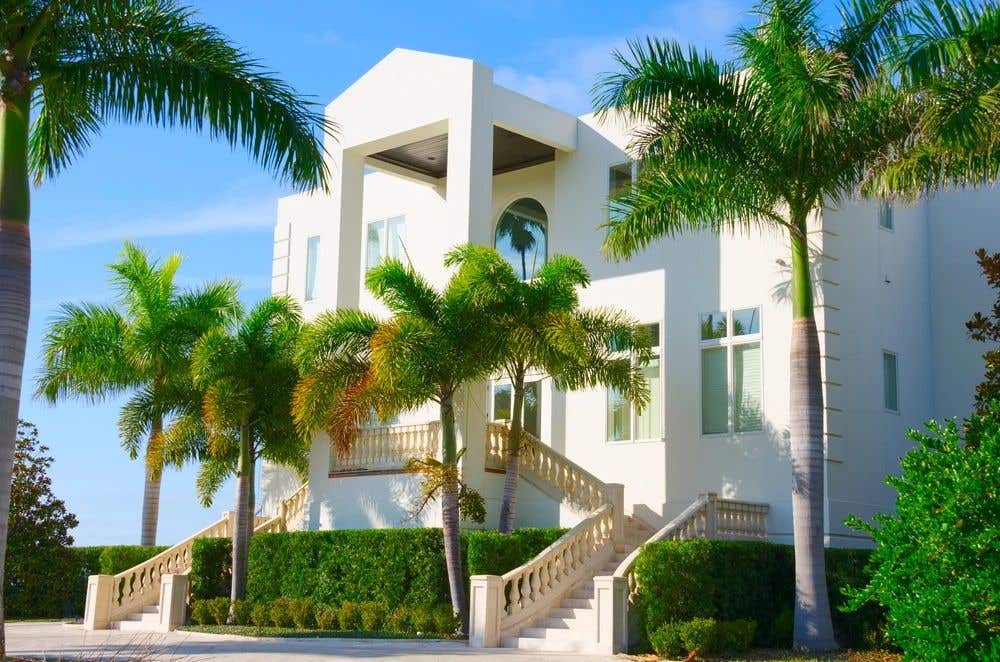It might seem counterintuitive, but people with particularly valuable homes often have a hard time getting insured. Let’s take a look at what l is, what it covers, and who needs it so you can decide if the coverage is right for you.
What is high-value home insurance?
High-value home insurance is a homeowners policy specially designed for houses worth more than $1 million. While high-value home policies are similar to standard homeowners insurance in many ways, they often offer unique benefits to policyholders, largely because people with higher-value homes tend to have slightly different needs.
Before we get into the nitty-gritty, it’s worth emphasizing that the “high-value” here applies to the home, not the insurance. So if you have a “normal” value home in a risky area, you may need higher levels of insurance coverage, but you’ll still want to get basic homeowners insurance. You only need high-value or luxury home insurance if your home’s value exceeds the $1 million mark.
What does high-value home insurance cover?
Like a standard homeowners insurance policy, high-value home insurance has several types of coverages. These are:
- Coverage A. This is also called dwelling coverage. A high-value home policy has dwelling coverage of $ 1 million or more.
- Coverage B. Other structures coverage helps pay for damage to structures on your property aside from the primary residence, such as fences and sheds.
- Coverage C. This is personal property coverage, and it can help cover the contents of your home in the event of a loss.
- Coverage D. Loss of use coverage often helps you pay for additional expenses if covered damage makes your residence temporarily uninhabitable.
- Coverage E. Personal liability coverage may pay claims if you’re responsible for someone else’s medical bills or property damage.
- Coverage F. Medical payments coverage typically helps pay your guest’s minor medical expenses.
High-value home insurance perks
While the big difference between standard and high-value home insurance is the amount of dwelling coverage offered, high-value homeowners policies often include additional benefits. Not every insurance company includes all of these perks in their luxury home insurance, but knowing what might be available can help you compare policies.
More extensive property coverage
Standard homeowners insurance policies typically cover your personal property like furniture and clothing. However, the amount of coverage available is often limited for specific types of property. Big ticket items like jewelry, art, furs, or guns, may require additional coverage through a scheduled property endorsement that provides higher coverage limits for valuables.
High-value home coverage, though, usually includes protection for expensive items. If you assume people with more expensive homes are more likely to have expensive possessions, it makes sense to include coverage for them in the policy.
Identity theft coverage
While identity theft coverage isn’t standard on all high-value home insurance policies, it’s not uncommon, either. This can be a nice supplement for those with a higher net worth because criminals have an incentive to steal their identities and benefit from their assets.
Cash benefits for extensive damage
As with any type of insurance, not all high-value policies are the same. But we’ve seen that some high-value policies offer cash benefits for extensive damage if the homeowner decides not to rebuild.
For example, imagine your high-value home is more or less destroyed by fire. Your high-value policy would likely pay you enough money to build a home of a similar value on the same property. But if you decide you don’t want to do that – maybe because you’re afraid the area is too risky – some policies pay you in cash what rebuilding would have cost.
Who needs high-value home insurance?
Homeowners whose homes are valued at more than $1 million usually need luxury home insurance. However, you should note that we’re talking about your home’s replacement cost, not its market value. The replacement cost is the amount it would take to rebuild your home from the ground up and is the amount insurers use to calculate premiums.
Warning: Many high-value homes are underinsured
One last thing to consider: many homes are underinsured, and that includes high-value ones. This is bad news because it means the owners of these homes stand to lose a lot in the event of damage. We described a lot of neat benefits in this post, but keep in mind that these benefits are generally only available to homeowners who are adequately insured for the value of their home and property.
If your home is worth more than $ 1 million, and you aren’t sure if you have the right policy, now may be a good time to shop for home insurance. Give us a call to discuss high-value homeowners insurance.


